Themed collection Nanoscale Horizons, Nanoscale, and ChemComm: Nanocatalysis

Retrospective insights into recent MXene-based catalysts for CO2 electro/photoreduction: how far have we gone?
This state-of-the-art review of MXene-based catalysts in CO2 electro/photoreduction places an emphasis on synthesis approaches, surface termination modulation, heterostructure engineering and reaction mechanisms.
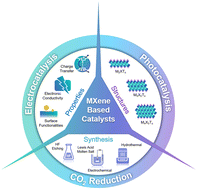
Nanoscale, 2023,15, 6536-6562
https://doi.org/10.1039/D2NR05718B
In situ characterisation for nanoscale structure–performance studies in electrocatalysis
We focus on the new horizons in operando/in situ characterisation techniques in electrocatalysis, providing a critical analysis of how advanced in situ techniques help us to deepen our understanding of reaction mechanisms and material evolution.

Nanoscale Horiz., 2023,8, 146-157
https://doi.org/10.1039/D2NH00447J
COx conversion to aromatics: a mini-review of nanoscale performance
The conversion of COx into value-added green aromatics is considered as a promising route to achieve the world's decarbonization due to its considerable thermodynamic driving force and atomic economy where low H/C ratio aromatics are chosen as a product.
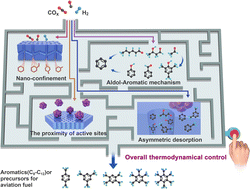
Nanoscale Horiz., 2022,7, 1478-1487
https://doi.org/10.1039/D2NH00307D
A review on ZnS-based photocatalysts for CO2 reduction in all-inorganic aqueous medium
This article reviews the strategies of maximizing CO2 photoreduction rates in distinguished ZnS-based photocatalytic systems by continuously optimizing the reaction medium and photocatalysts.
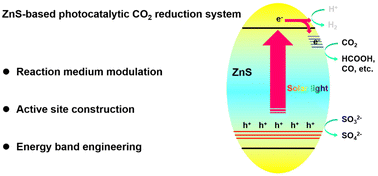
Nanoscale, 2022,14, 14455-14465
https://doi.org/10.1039/D2NR03703C
Rare earth element based single-atom catalysts: synthesis, characterization and applications in photo/electro-catalytic reactions
The synthesis, characterization, and applications of rare earth-based single-atom catalysts.
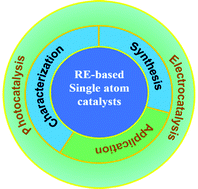
Nanoscale Horiz., 2022,7, 31-40
https://doi.org/10.1039/D1NH00459J
Transition metal-based layered double hydroxides for photo(electro)chemical water splitting: a mini review
The review examines the areas: (i) routes for synthesis of transition metal-based LDHs, (ii) recent developments in transition metal-based LDHs for photo(electro)chemical water splitting, (iii) a summary of the structure–property relationships therein.
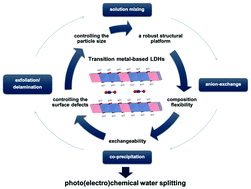
Nanoscale, 2021,13, 13593-13603
https://doi.org/10.1039/D1NR03409J
Cooperativity in supported metal single atom catalysis
Cooperativity in single atom catalysis greatly exceeds the (important) metal–support interaction, and other types of synergies (with a nanoparticle – NP, a second SA – SA2, or a ligand/heteroatom – X) are described in this mini-review.

Nanoscale, 2021,13, 5985-6004
https://doi.org/10.1039/D1NR00465D
Deeper mechanistic insights into epitaxial nickelate electrocatalysts for the oxygen evolution reaction
Epitaxial oxide thin films enable electrocatalyst design, e.g. for the oxygen evolution reaction, based on atomic-level structure–property–functionality relationships.

Chem. Commun., 2023,59, 4562-4577
https://doi.org/10.1039/D3CC00325F
Recent advances in the synthesis and electrocatalytic application of MXene materials
This review summarizes the preparation methods of MXene and the applications of MXene in electrocatalytic hydrogen evolution reaction, oxygen evolution reaction, oxygen reduction reaction, carbon dioxide reduction reaction and nitrogen reduction reaction.
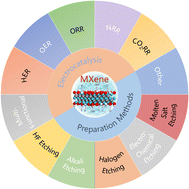
Chem. Commun., 2023,59, 3968-3999
https://doi.org/10.1039/D2CC06418A
Recent advances in the pre-oxidation process in electrocatalytic urea oxidation reactions
In this feature article, we discuss the significant role of the pre-oxidation reaction during urea electro-oxidation, and summarize the detailed strategies and recent advances in promoting the pre-oxidation reaction.
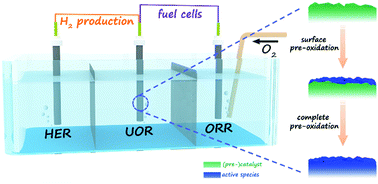
Chem. Commun., 2022,58, 2430-2442
https://doi.org/10.1039/D1CC06290E
Plasmonic catalysis with designer nanoparticles
Recent efforts on the use of controlled metal nanoparticles to establish structure–performance relationships in plasmonic catalysis are discussed.
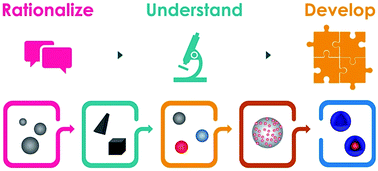
Chem. Commun., 2022,58, 2055-2074
https://doi.org/10.1039/D1CC03779J
Heteroatom-doped carbon-based oxygen reduction electrocatalysts with tailored four-electron and two-electron selectivity
Recent advances in heteroatom-doped carbon electrocatalysts showing tailored 4e− and 2e− selectivity for oxygen reduction reaction are reviewed.
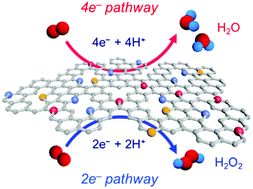
Chem. Commun., 2021,57, 7350-7361
https://doi.org/10.1039/D1CC02667D
Recent innovations in the technology and applications of low-dimensional CuO nanostructures for sensing, energy and catalysis
Low-dimensional copper oxide nanostructures are a promising family of functional nanomaterials. This article reviews recent progress in fabrication technologies for CuO nanostructures and gives examples of their leading-edge applications.

Nanoscale Horiz., 2023,8, 568-602
https://doi.org/10.1039/D2NH00546H
Emerging single-atom iron catalysts for advanced catalytic systems
Isolated metal atoms on supports tend to migrate and agglomerate in the processes of catalyst design and construction, thus achieving precise control of high metal loading and single-atomic dispersion is significant.
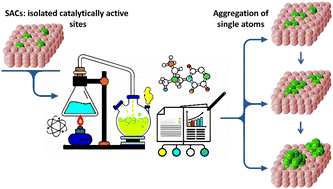
Nanoscale Horiz., 2022,7, 1340-1387
https://doi.org/10.1039/D2NH00362G
Transition metal-based catalysts for electrochemical water splitting at high current density: current status and perspectives
Current popular transition metal-based electrocatalysts developed for HER/OER in water splitting at high current density are critically reviewed and discussed.
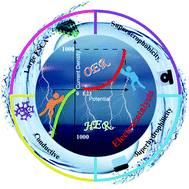
Nanoscale, 2021,13, 12788-12817
https://doi.org/10.1039/D1NR02592A
Toward the creation of high-performance heterogeneous catalysts by controlled ligand desorption from atomically precise metal nanoclusters
This review describes state-of-art techniques and knowledge on the creation of high-performance heterogeneous catalysts using atomically precise metal nanoclusters.
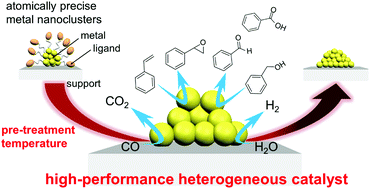
Nanoscale Horiz., 2021,6, 409-448
https://doi.org/10.1039/D1NH00046B
2D metal–organic framework-based materials for electrocatalytic, photocatalytic and thermocatalytic applications
2D MOF-based materials with unique characteristics have great potential in various electrocatalytic, photocatalytic and thermocatalytic applications.
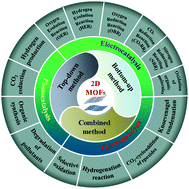
Nanoscale, 2021,13, 3911-3936
https://doi.org/10.1039/D0NR09064F
Growth and in situ characterization of 2D materials by chemical vapour deposition on liquid metal catalysts: a review
In this review we highlight the recent progress in 2DM growth on LMCat, which in combination with in situ characterization presents a viable and large-scale sustainable direction that has the prospect of achieving defect-free 2D materials.
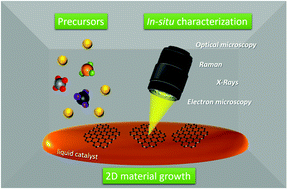
Nanoscale, 2021,13, 3346-3373
https://doi.org/10.1039/D0NR07330J
Single-atom alloy Ir/Ni catalyst boosts CO2 methanation via mechanochemistry
A new catalytic approach is pioneered to achieve CO2 methanation via a single atom alloy Ir/Ni catalyst using a ball-milling method.
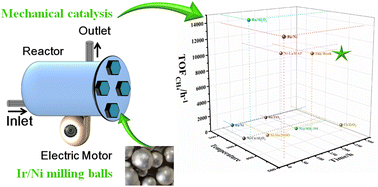
Nanoscale Horiz., 2023,8, 852-858
https://doi.org/10.1039/D3NH00040K
Structure engineering of CeO2 for boosting the Au/CeO2 nanocatalyst in the green and selective hydrogenation of nitrobenzene
Au/CeO2 fabricated by loading tannic acid-reduced Au on various structurally engineered CeO2 are applied to catalytic nitrobenzene transfer hydrogenation with isopropanol as a green H2 provider, revealing a detailed structure–activity relationship.

Nanoscale Horiz., 2023,8, 812-826
https://doi.org/10.1039/D3NH00103B
Investigating the interfacial properties of halide perovskite/TiOx heterostructures for versatile photocatalytic reactions under sunlight
Heterostructures of metal halide perovskites and TiOx are efficient photocatalytic materials owing to the combination of the high absorption coefficients and long charge-carrier lifetimes of perovskites, and efficient photocatalytic activity of TiOx.

Nanoscale, 2023,15, 7710-7714
https://doi.org/10.1039/D2NR06840K
Concurrent tandem catalysis enabled by nanomechanical motion in heteroleptic four-component dual-catalyst machinery
The stochastic motion (45 kHz) of a biped in a dynamic slider-on-deck kicks out a basic organocatalyst into solution while parallel freeing a silver(I) site with both synergistically running a tandem Michael addition/hydroalkoxylation cyclization.

Chem. Commun., 2023,59, 4915-4918
https://doi.org/10.1039/D3CC00637A
Redox-active Sn(II) to lead to SnFe2O4 spinel as a bi-functional water splitting catalyst
5 nm SnFe2O4 nanoparticle, an un-explored inverse spinel ferrite material, has been explored as electrode material for overall water splitting study where Fe sites are OER active and Sn sites promote electron conduction and HER active.
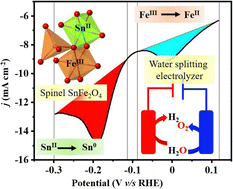
Chem. Commun., 2023,59, 4943-4946
https://doi.org/10.1039/D3CC00947E
Anchoring ultra-small molybdenum oxide species on covalent triazine frameworks for efficient electrochemical nitrogen fixation
We report a smart ion-exchange strategy to anchor molybdenum oxide particles on charge-modulated conjugated triazine frameworks (Mo/CTF-I) for electrochemically fixing nitrogen.

Chem. Commun., 2023,59, 4352-4355
https://doi.org/10.1039/D2CC06983K
Solvent-free hydroboration of alkenes and alkynes catalyzed by rhodium-ruthenium nanoparticles on carbon nanotubes
A heterogeneous catalyst consisting of bimetallic rhodium-ruthenium particles immobilized on carbon nanotubes was used in the hydroboration reaction and proved highly effective for a variety of alkenes and alkynes.
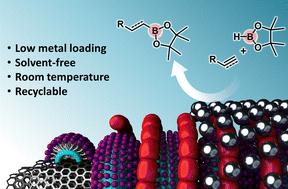
Chem. Commun., 2023,59, 2763-2766
https://doi.org/10.1039/D2CC06864H
Surface oxidation protection strategy of CoS2 by V2O5 for electrocatalytic hydrogen evolution reaction
V2O5 nanoclusters can inhibit CoS2 from serious surface oxidation in air, and the lower surface oxidation degree, the better HER performance.

Nanoscale Horiz., 2023,8, 338-345
https://doi.org/10.1039/D2NH00431C
Defect engineering of molybdenum disulfide nanosheets boosting super Zn2+ storage from polyaniline intercalation
Layer structured MoS2 with intercalation of polyaniline and crystal defects was prepared, which delivers high reversible capacity and excellent cycle stability, including 77.8 mA h g−1 at 1 A g−1 and near 100% retention rate after 750 cycles.

Chem. Commun., 2023,59, 1845-1848
https://doi.org/10.1039/D2CC05888J
Theoretical exploration of the nitrogen fixation mechanism of two-dimensional dual-metal TM1TM2@C9N4 electrocatalysts
Four TM1TM2@C9N4 candidates (TM1TM2 = NiRu, FeNi, TiNi, and NiZr) with end-on N2 adsorption configuration, and two candidates (TM1TM2 = TiNi and TiFe) with side-on adsorption configuration, were screened out as high efficiency NRR catalysts.

Nanoscale Horiz., 2023,8, 211-223
https://doi.org/10.1039/D2NH00451H
MXene-derived Ti3C2–Co–TiO2 nanoparticle arrays via cation exchange for highly efficient and stable electrocatalytic oxygen evolution
A cation exchange strategy is proposed to convert layered Ti3C2–Na–TiO2 MXene nanofibers into Ti3C2–Co–TiO2 MXene nanoparticle arrays with numerous heterogeneous interfaces, which deliver excellent oxygen evolution reaction (OER) activity.

Chem. Commun., 2023,59, 880-883
https://doi.org/10.1039/D2CC05911H
A dual-functional Bi-doped Co3O4 nanosheet array towards high efficiency 5-hydroxymethylfurfural oxidation and hydrogen production
In this work, a Bi-doped Co3O4 nanosheet array grown on Ni foam was used as an efficient bifunctional catalyst, which shows high activity and good stability toward HMF oxidation and hydrogen evolution.

Chem. Commun., 2023,59, 442-445
https://doi.org/10.1039/D2CC05722K
Cu and Si co-doping on TiO2 nanosheets to modulate reactive oxygen species for efficient photocatalytic methane conversion
The Cu and Si co-doping could rationally regulate the electronic structure of TiO2 nanosheets and maneuver the reactive oxygen species for methane activation, which achieves significant photocatalytic methane conversion into ethane.
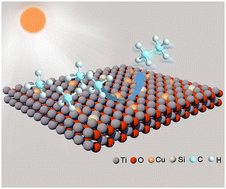
Nanoscale Horiz., 2023,8, 63-68
https://doi.org/10.1039/D2NH00457G
Highly efficient electrocatalytic biomass valorization over a perovskite-derived nickel phosphide catalyst
A perovskite-derived nickel phosphide catalyst exhibits excellent electrocatalytic oxidation performance for biomass valorization to replace the competitive oxygen evolution reaction.
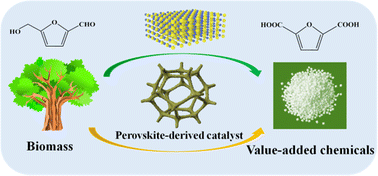
Nanoscale Horiz., 2023,8, 69-74
https://doi.org/10.1039/D2NH00391K
CoO nanoparticle decorated N-doped carbon nanotubes: a high-efficiency catalyst for nitrate reduction to ammonia
As an electrocatalyst for nitrate reduction, CoO nanoparticle decorated N-doped carbon nanotubes show a large NH3 yield up to 9166.37 μg h−1 cm−2 and a high faradaic efficiency of 93.63% in 0.1 M NaOH with 0.1 M NO3−.

Chem. Commun., 2022,58, 5901-5904
https://doi.org/10.1039/D2CC00997H
Heterostructured Bi–Cu2S nanocrystals for efficient CO2 electroreduction to formate
We report the proof-of-concept design of interfacial sites with a selectivity-governing and hydrogen evolution reaction-suppressing domain (Bi) and an electrokinetic-promoting domain (Cu2S) for efficient CO2 electroreduction to formate.
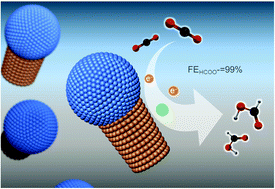
Nanoscale Horiz., 2022,7, 508-514
https://doi.org/10.1039/D1NH00661D
A FeCo2O4 nanowire array enabled electrochemical nitrate conversion to ammonia
A bimetallic FeCo2O4 spinel nanowire array grown on carbon cloth is highly active and stable for electrocatalytic NO3− reduction to NH3, capable of attaining a large NH3 yield of 4988 μg h−1 cm−2 with a high faradaic efficiency of 95.9%.
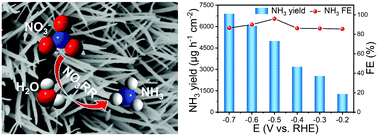
Chem. Commun., 2022,58, 4480-4483
https://doi.org/10.1039/D2CC00189F
Co nanoparticle-decorated pomelo-peel-derived carbon enabled high-efficiency electrocatalytic nitrate reduction to ammonia
Cobalt nanoparticle-decorated pomelo-peel-derived carbon acts as a highly active electrocatalyst for NO3−–to–NH3 conversion, capable of attaining a large faradaic efficiency of 90.1% and an ultrahigh NH3 yield of 1.1 mmol h−1 mgcat.−1.

Chem. Commun., 2022,58, 4259-4262
https://doi.org/10.1039/D2CC00952H
A TiO2−x nanobelt array with oxygen vacancies: an efficient electrocatalyst toward nitrite conversion to ammonia
In situ grown TiO2 nanobelt array with oxygen vacancies on Ti plate acts as a high-efficiency and stable catalyst for electrochemical NO2− reduction to NH3, attaining a large NH3 yield of 7898 μg h−1 cm−2 with a high faradaic efficiency of 92.7%.

Chem. Commun., 2022,58, 3669-3672
https://doi.org/10.1039/D2CC00856D
Enhanced electrocatalytic performance of TiO2 nanoparticles by Pd doping toward ammonia synthesis under ambient conditions
Pd-doped TiO2 nanoparticles as an effective NRR electrocatalyst present a large NH3 yield of 17.4 μg h−1 mgcat.−1 and a high faradaic efficiency of 12.7% at −0.50 V vs. RHE in 0.1 M Na2SO4 electrolyte.
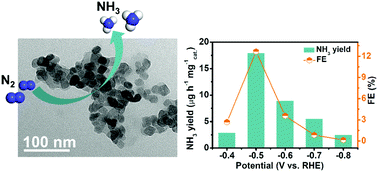
Chem. Commun., 2022,58, 3214-3217
https://doi.org/10.1039/D1CC06778H
Interlink among catalyst loading, transport and performance of proton exchange membrane fuel cells: a pore-scale study
For the first time, a pore-scale model is developed to simulate the reactive transport of oxygen, protons, and electrons in the catalyst layer of PEM fuel cells.

Nanoscale Horiz., 2022,7, 255-266
https://doi.org/10.1039/D1NH00501D
Boosting electrochemical nitrite–ammonia conversion properties by a Cu foam@Cu2O catalyst
CF@Cu2O is a superb NO2− reduction reaction electrocatalyst, achieving high-efficiency electrosynthesis of ammonia from nitrite with an excellent ammonia yield of 7510.73 μg h−1 cm−2 and Faraday efficiency of 94.21%.

Chem. Commun., 2022,58, 517-520
https://doi.org/10.1039/D1CC06215H
High-performance NH3 production via NO electroreduction over a NiO nanosheet array
A NiO nanosheet array is active for NH3 electrosynthesis via a NO reduction reaction, attaining a faradaic efficiency of 90% and an NH3 yield of 2130 μg h−1 cm−2. Its aqueous Zn–NO battery offers a power density of 0.88 mW cm−2 and an NH3 yield of 228 μg h−1 cm−2.

Chem. Commun., 2021,57, 13562-13565
https://doi.org/10.1039/D1CC06113E
An amorphous WC thin film enabled high-efficiency N2 reduction electrocatalysis under ambient conditions
As an electrocatalyst for N2-to-NH3 conversion, an amorphous WC thin film shows a large NH3 yield of 43.37 μg h−1 mg−1cat. with a high faradaic efficiency of 21.65% at −0.10 V vs. RHE in 0.5 M LiClO4.

Chem. Commun., 2021,57, 7806-7809
https://doi.org/10.1039/D1CC03139B
Highly efficient electrocatalysts for overall water splitting: mesoporous CoS/MoS2 with hetero-interfaces
A mesoporous binary CoS/MoS2 with active hetero-interfaces was assembled through a facile sulphuration process from a CoMo-bimetallic HZIF, which exhibited excellent electrocatalytic OER and HER activity, and superior water splitting performance.
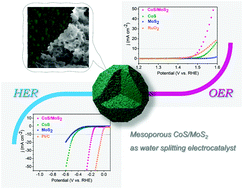
Chem. Commun., 2021,57, 4847-4850
https://doi.org/10.1039/D1CC01578H
The edge-epitaxial growth of yellow g-C3N4 on red g-C3N4 nanosheets with superior photocatalytic activities
Type II heterostructures consisting of red/yellow g-C3N4 nanosheets prepared via edge-epitaxial growth revealed superior photocatalytic activities for enhanced H2 generation and CO2 reduction.
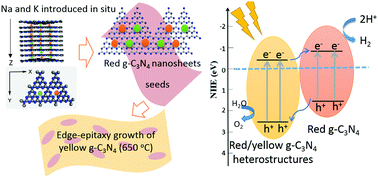
Chem. Commun., 2021,57, 3119-3122
https://doi.org/10.1039/D1CC00209K
Synthesis of monodisperse high entropy alloy nanocatalysts from core@shell nanoparticles
Annealing core@shell nanoparticles (NPs) yields high-entropy alloy NPs. Owing to their dispersed Pt/Pd content and low elemental diffusivity, they exhibit enhanced electrocatalytic performance and durability for the oxygen reduction reaction.

Nanoscale Horiz., 2021,6, 231-237
https://doi.org/10.1039/D0NH00656D
PtPd hollow nanocubes with enhanced alloy effect and active facets for efficient methanol oxidation reaction
An alternating-reduction approach is developed to fabricate PtPd hollow nanocubes with highly catalytically-favoured {100} facets and enhanced alloy effect for efficient methanol oxidation reaction.
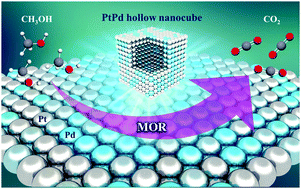
Chem. Commun., 2021,57, 986-989
https://doi.org/10.1039/D0CC06876D
Efficient alcohol fuel oxidation catalyzed by a novel Pt/Se catalyst
Selenium spheres decorated with Pt nanoparticles were found to be efficient for alcohol fuel oxidation in fuel cells.
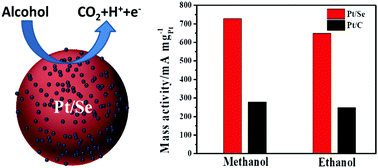
Chem. Commun., 2021,57, 199-202
https://doi.org/10.1039/D0CC06386J
Plasmonic magnesium nanoparticles decorated with palladium catalyze thermal and light-driven hydrogenation of acetylene
Plasmonic Mg cores capture light to decrease the activation energy and increase the rate of acetylene hydrogenation on Pd nanoparticles.

Nanoscale, 2023,15, 7420-7429
https://doi.org/10.1039/D3NR00745F
Electro- and photoactivation of silver–iron oxide particles as magnetically recyclable catalysts for cross-coupling reactions
Colloidal Ag particles decorated with Fe3O4 islands can be electrochemically or photochemically activated as inverse catalysts for C(sp2)–H heteroarylation.
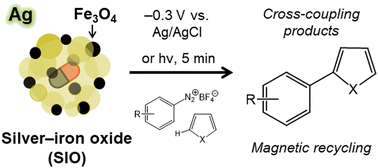
Nanoscale, 2023,15, 5074-5082
https://doi.org/10.1039/D2NR04629F
Enhancing the catalytic performance of Co–N–C derived from ZIF-67 by mesoporous silica encapsulation for chemoselective hydrogenation of furfural
Hollow mesoporous Co–N–C@mSiO2 catalysts derived from ZIF-67 via the encapsulation–pyrolysis strategy exhibit excellent performance and good stability for furfural hydrogenation.

Nanoscale, 2023,15, 4612-4619
https://doi.org/10.1039/D2NR05831F
2D MoS2/BiOBr van der Waals heterojunctions by liquid-phase exfoliation as photoelectrocatalysts for hydrogen evolution
2D MoS2/BiOBr van der Waals heterojunctions produced through liquid phase exfoliation are tested as catalysts for photoelectrochemical hydrogen evolution, with the 1% w/w composition exhibiting good performance and stability to photocorrosion.
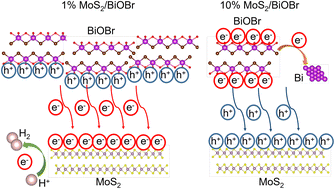
Nanoscale, 2023,15, 522-531
https://doi.org/10.1039/D2NR04970H
Construction of three-dimensional cobalt sulfide/multi-heteroatom co-doped porous carbon as an efficient trifunctional electrocatalyst
A three-dimensional cobalt sulfide/Co, N and S multi-heteroatom codoped carbon was synthesized as a trifunctional electrocatalyst through one-step sulfidation of zeolitic-imidazolate frameworks, showing outstanding ORR, OER and HER performance.

Nanoscale, 2022,14, 9849-9859
https://doi.org/10.1039/D2NR01704K
Electrocatalytic water oxidation performance in an extended porous organic framework with a covalent alliance of distinct Ru sites
We have designed an extended porous organic polymer with a covalent alliance of distinct Ru sites and investigated its electrocatalytic water oxidation performance.
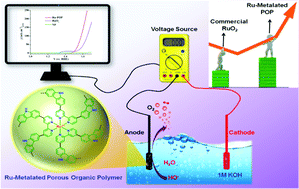
Nanoscale, 2022,14, 7621-7633
https://doi.org/10.1039/D2NR01297A
Computational screening of single-atom catalysts supported by VS2 monolayers for electrocatalytic oxygen reduction/evolution reactions
Single Ni atom anchored on pristine and N-doped VS2 monolayer can perform as bifunctional catalyst for ORR and OER.
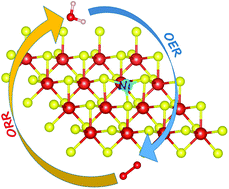
Nanoscale, 2022,14, 6902-6911
https://doi.org/10.1039/D2NR01671K
Synthesis of silver and gold nanoparticles–enzyme–polymer conjugate hybrids as dual-activity catalysts for chemoenzymatic cascade reactions
A novel strategy to synthesize silver and gold nanoparticles–enzyme hybrids based on using enzyme-polymer bioconjugates has been developed. These nanobiohybrids were successfully used as dual activity catalysts in the stereoselective hydrolysis/cyclization cascade reaction.
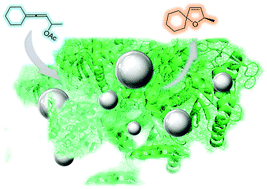
Nanoscale, 2022,14, 5701-5715
https://doi.org/10.1039/D2NR00361A
Bimetallic Co–Mo sulfide/carbon composites derived from polyoxometalate encapsulated polydopamine-decorated ZIF nanocubes for efficient hydrogen and oxygen evolution
Defect-rich bimetallic Co–Mo sulfide/carbon composites derived from polyoxometalate encapsulated polydopamine-decorated ZIF nanocubes exhibit a remarkable improvement in electrocatalyic performance towards both hydrogen and oxygen evolution.

Nanoscale, 2022,14, 4726-4739
https://doi.org/10.1039/D1NR07913A
New insights into the key bifunctional role of sulfur in Fe–N–C single-atom catalysts for ORR/OER
Well-regulated OOH* stabilization is revealed to be the origin of bifunctional ORR/OER activity.

Nanoscale, 2022,14, 3212-3223
https://doi.org/10.1039/D1NR07851H
Organogel-assisted porous organic polymer embedding Cu NPs for selectivity control in the semi hydrogenation of alkynes
Product selectivity in catalytic semi hydrogenation of alkynes could be controlled by offering a steric hindrance effect through organogel-assisted porous-organic-polymer (POP) supported Cu catalysts (Cu@TpRb-POP).

Nanoscale, 2022,14, 1505-1519
https://doi.org/10.1039/D1NR07255B
MoS2 stacking matters: 3R polytype significantly outperforms 2H MoS2 for the hydrogen evolution reaction
Sodium naphthalenide exfoliated 3R polytype of MoS2 outperforms the 2H polytype due to much higher conversion to the metallic 1T phase.

Nanoscale, 2021,13, 19391-19398
https://doi.org/10.1039/D1NR03284D
Self-supported nickel-doped molybdenum carbide nanoflower clusters on carbon fiber paper for an efficient hydrogen evolution reaction
Self-supported Ni-doped Mo2C nanoflowers assembled with ultrathin nanosheets on CFP as an excellent electrocatalyst for the hydrogen evolution reaction were prepared via a molten salt method.
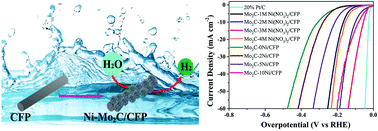
Nanoscale, 2021,13, 8264-8274
https://doi.org/10.1039/D1NR00169H
Facile synthesis of CNT interconnected PVP-ZIF-8 derived hierarchically porous Zn/N co-doped carbon frameworks for oxygen reduction
Preparation of hybrid catalyst by the coordination of polyvinylpyrrolidone (PVP) and monodisperse zeolitic imidazolate framework (ZIF-8), entangled by carbon nanotubes (CNTs) through the pyrolysis process.

Nanoscale, 2021,13, 6248-6258
https://doi.org/10.1039/D0NR09156A
3D porous Ni/NiOx as a bifunctional oxygen electrocatalyst derived from freeze-dried Ni(OH)2
3D porous Ni/NiOx was synthesized via the freeze-drying method. Freeze drying method could improve the surface area and catalytic activation of Nickel hydroxide nanosheet.
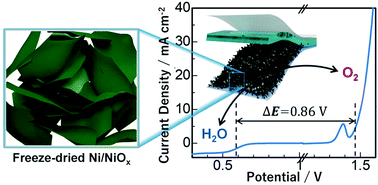
Nanoscale, 2021,13, 5530-5535
https://doi.org/10.1039/D0NR08034A
Stabilization effects in binary colloidal Cu and Ag nanoparticle electrodes under electrochemical CO2 reduction conditions
Colloidal Cu and Ag nanoparticles retain their shape during the CO2 reduction reaction (−0.8 V vs. RHE) due to immiscibility of the lattices and synergy at the nanoscale results in enhanced methane and C2 product formation.
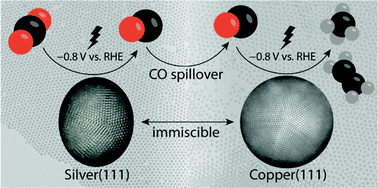
Nanoscale, 2021,13, 4835-4844
https://doi.org/10.1039/D0NR09040A
Ni2P nanoflakes for the high-performing urea oxidation reaction: linking active sites to a UOR mechanism
High electrical conductivity and tendency in triggering the UOR via a direct electro-oxidation mechanism result in superior UOR activity for Ni2P nanoflakes.
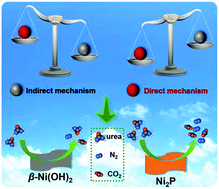
Nanoscale, 2021,13, 1759-1769
https://doi.org/10.1039/D0NR08025J
About this collection
This online collection from Nanoscale Horizons, Nanoscale and ChemComm showcases some of the recent nanocatalysis papers published in the journals.
We hope you enjoy reading these articles!